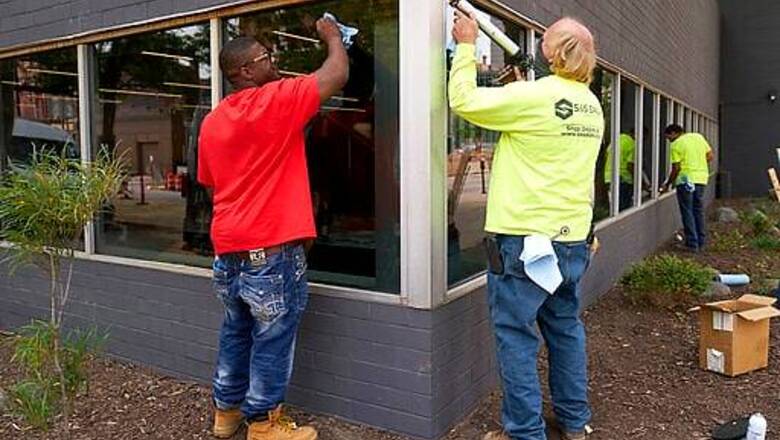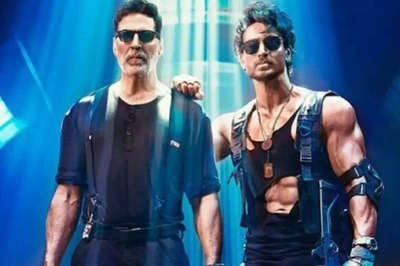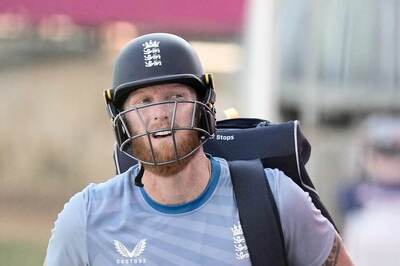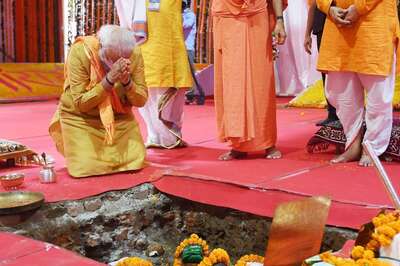
views
OMAHA, Neb.: This week’s decision to charge a white bar owner who fatally shot a Black man during a chaotic night of protests in downtown Omaha months after the shooting was deemed self-defense highlights how difficult it can be to sort out these cases.
The key difference in the Omaha case is that the grand jury that reviewed the case had additional evidence about what happened before surveillance video showed Jake Gardner shooting 22-year-old James Scurlock on May 30 after the two scuffled. In at least one other instance of violence during protests this year, authorities are still trying to sort out what happened.
In Minnesota, 43-year-old Calvin Horton Jr. was fatally shot near a Minneapolis pawn shop on May 27 as protests over George Floyds death began to turn violent. The pawn shops owner was arrested the night of the shooting but released several days later, with prosecutors saying they needed more information about what happened before the shooting to consider charges. Hortons family complained in July of getting little information on the case. Hennepin County attorneys office spokeswoman Lacey Severins said Wednesday the case remains under investigation.
It can often be hard to sort out, Fordham University law professor Jim Cohen said about crimes during protests. Its often not so easy to sort out who is unlawfully protesting meaning looting, for example and who is lawfully protesting.
Those two shootings happened as protests and civil unrest has roiled cities across the country over Floyd’s May 25 death at the hands of Minneapolis police. Floyd, who was black and handcuffed, died after a white police officer, Derek Chauvin, pressed his knee into Floyds neck for several minutes even after Floyd stopped moving and pleading for air.
In Omaha, Douglas County Attorney Don Kleine initially decided Gardner, the bar owner, acted in self-defense after he reviewed video of the incident and witness statements in the days after the shooting, but he asked the grand jury to examine the case after his decision was criticized because he wanted people to have faith in the justice system.
On Tuesday, Special Prosecutor Frederick Franklin said that additional evidence from Gardner’s phone and his Facebook Messenger account, along with video from inside his bar, shed light on his intent the night of the shooting. He said the new evidence undermines the self-defense theory although he wouldn’t provide specifics of exactly what it showed.
Gardner was also charged with attempted assault, making terroristic threats and using a gun to commit a felony. His attorney, Stu Dornan, didn’t respond to phone messages from The Associated Press on Wednesday. Legal experts say prosecutors may have a difficult time securing a conviction because the case will hinge on what both men intended to do that night.
Obviously the video tape evidence is going to be crucial in trying to determine whether or not Gardner believed that his life or his person were in grave danger under the circumstances, said longtime Nebraska criminal attorney Clarence Mock, who has also served as a special prosecutor before.
The shooting happened outside Gardner’s bar in downtown Omaha as he sought to ward off any theft or property damage. In June, officials played surveillance video that seemed to show words exchanged between Gardner, his father and protesters after the windows of his bar were broken. Gardner flashed the gun but then backed away. Gardner was shoved to the ground by two people before he fired two shots, sending people scrambling. Scurlock then jumped on Gardners back and was shot by Gardner. While there was no audio with the video, Kleine said Gardner warned Scurlock to get off of him several times before he fired the fatal shot.
Creighton University law school professor Raneta Mack said determining whether Scurlock was trying to stop Gardner from hurting anyone or whether he was trying to harm Gardner could be key in the case.
If Mr. Scurlock was coming to the defense of his friends or even members of the general public and that is why he was grabbing Gardner and putting him into a chokehold, then Gardner does not have a right of self defense, said Mack, who has taught criminal law for nearly three decades.
But Cohen said this will be a tough case for prosecutors because jurors tend to give defendants some benefit of the doubt when they were facing a chaotic situation.
There is a deference accorded to those who are perceived by a jury as lawfully protecting their property, Cohen said.
Of course, more evidence will be needed at trial to prove Gardner is guilty than what is required at this stage in the process. But the fact that Gardner has been charged means that the community will be able to learn more about what happened that night. Scurlock’s death inspired protests in Omaha in the days after prosecutors initially declined to file charges.
This will allow people to understand how the system works and be able to see for themselves what evidence the prosecution has and what evidence the defense presents to have maybe a greater understanding about what happened during the night of Mr. Scurlocks death, Mock said.
Disclaimer: This post has been auto-published from an agency feed without any modifications to the text and has not been reviewed by an editor


















Comments
0 comment